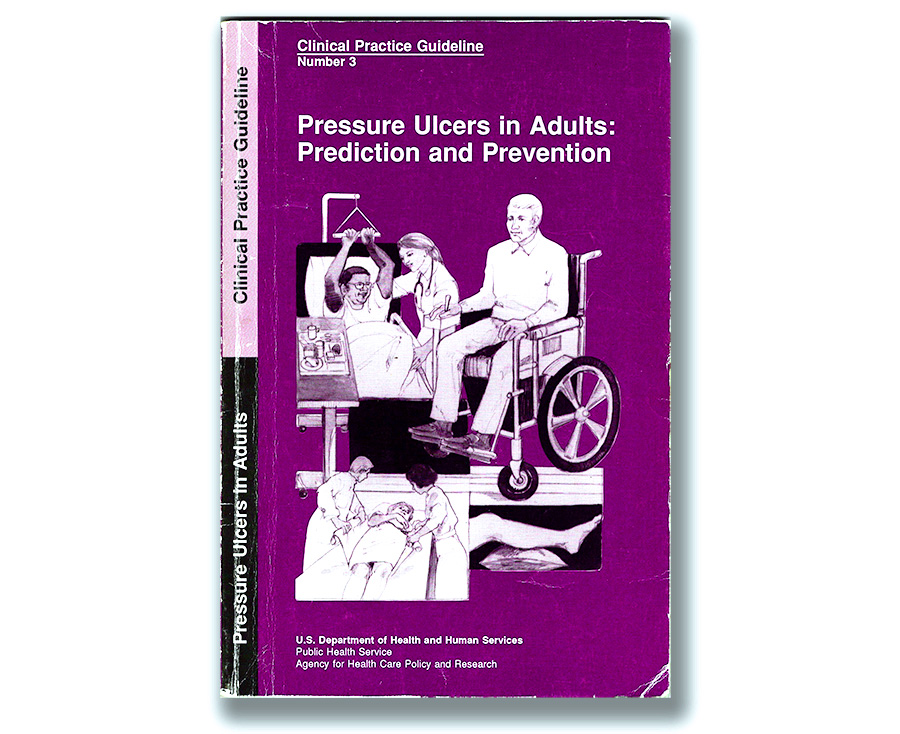 Does anyone remember “The Purple Book”? Those of us who have been in the wound care world for a while know this book as the first compendium of clinical practice guidelines for pressure ulcer prevention. Published in 1992, it was the main “go-to” resource for information on this topic and used by clinicians for many years.
Does anyone remember “The Purple Book”? Those of us who have been in the wound care world for a while know this book as the first compendium of clinical practice guidelines for pressure ulcer prevention. Published in 1992, it was the main “go-to” resource for information on this topic and used by clinicians for many years.
In the 1990s, awareness of pressure injuries in hospitals and nursing homes was just beginning. AHCPR commissioned a multidisciplinary panel of experts to develop the guideline, which was intended for clinicians who examine and treat persons at risk of developing pressure ulcers. It contained detailed recommendations for assessment and prevention, a decision-making algorithm, a glossary of terms, and a comprehensive list of references. Distributed free by the US Government, this book was a “must have” for anyone and everyone in the nascent field of wound care.
I found my Purple Book in the bottom of a drawer when doing some cleaning. Although well used it was in good shape, and brought back memories of my early career. The book was published just as I was beginning my first job as attending physician and director of research in a large nursing home in the Bronx. During my geriatric fellowship at Mount Sinai Medical Center I became interested in chronic wounds because many patients suffered with them but there was little information available on prevention and treatment. For those of us wanting to know more, this book was a huge gift.
Its amazing to reflect how the years have gone by so quickly, and how large and complex the wound care world has become. But the same challenges exist as three decades ago. As patients become older with complex medical needs, prevention of pressure injuries is of paramount importance. This involves knowledge of assessment of risk, the importance of nutrition, and the armamentarium of preventive devices.
The complete citation is Pressure Ulcers in Adults: Prediction and Prevention, published by the Agency for Health Care Policy and Research (AHCPR) in the US Department of Health and Human Services, 1992. I hope you can find a copy for your library.
* * * * * * * * * * * * * * *
RELATED POSTS:
New Reference Work on Pressure Injuries and Chronic Wounds
Academic Promotion at the Mount Sinai School of Medicine
Wound Care in the Geriatrics Review Syllabus
Wound Care Research at the American Geriatrics Society Annual Meeting

I have a copy!